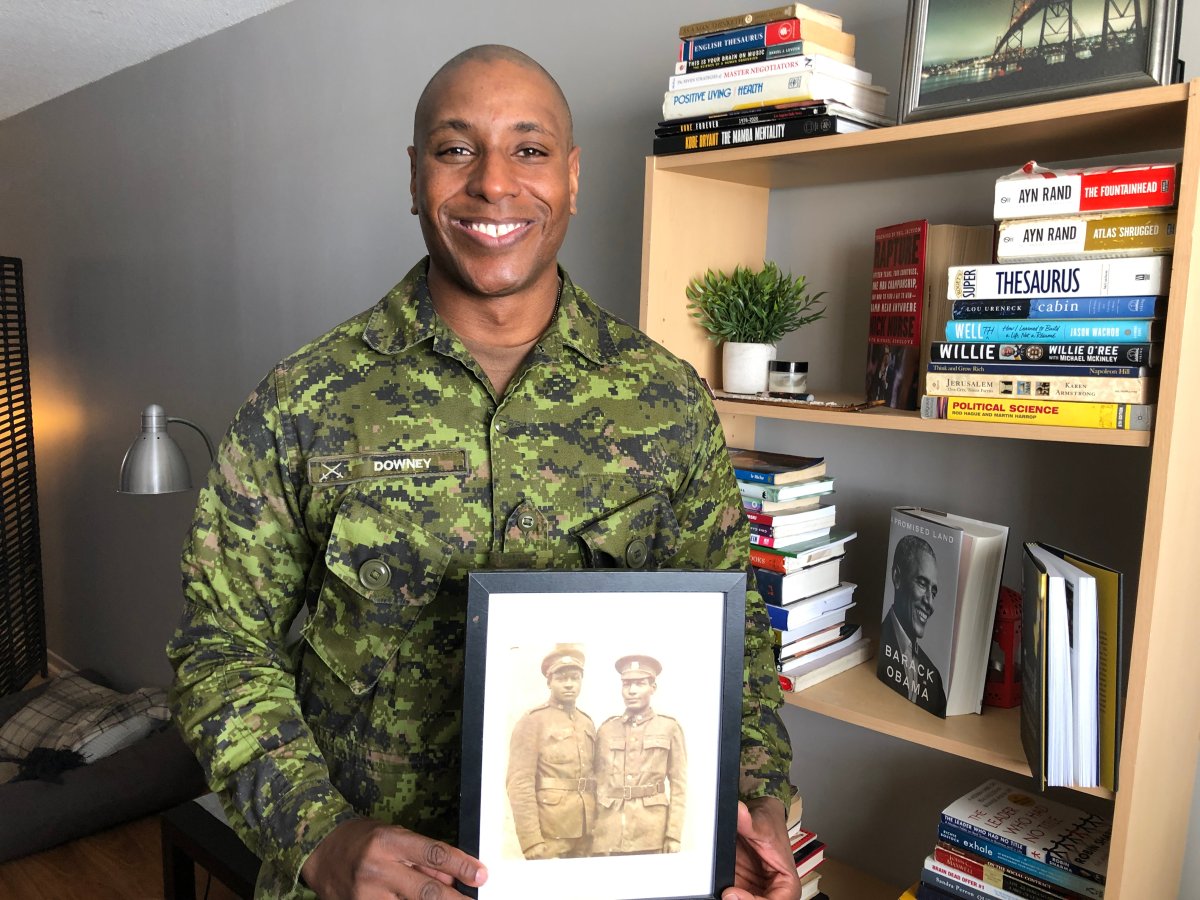Family members and a Nova Scotia museum are making new connections to a historic war effort.

A First World War unit, the No. 2 Construction Battalion, was comprised of 300 men who were prevented from fighting in the war because they were Black.
They persevered, forming what became known as the “Black Battalion.” Mostly soldiers from Nova Scotia, members of the No. 2 Battalion built rail lines, trenches and bridges, for the soldiers they were prohibited from fighting alongside.
Despite a topic steeped in racial prejudice, army reservist 2Lt. Jerome Downey reflects with pride on the contribution of his great grandfather, George Downey, who served with the battalion. Downey credits his ancestor with helping create a path of opportunity for descendants like him.
“To be a graduate of university, to be a tradesman, to be a business owner, to have the opportunities I have because of the sacrifices of members of the No. 2 Construction Battalion means a lot.”
Downey’s connection was reinforced by his visit, last November, to the Jura region of France, where the No. 2 Battalion’s efforts are memorialized at a Commonwealth gravesite.
In addition to leading an initiative to share racial diversity awareness with other forces members, Downey hopes more Canadians become aware of the battalion’s contributions by July, when the federal government will issue an apology for the racism that kept Black soldiers from being full partners in the war effort.
“We really want to give the No. 2 Construction Battalion the homecoming they never had.”
With growing awareness, there are new discoveries.
In February, a violin was donated to Nova Scotia’s Black Cultural Centre. The centre’s executive director, Russell Grosse, says the instrument was hand-crafted by George W. Reddick, a soldier who’d been part of the battalion’s musical band.
“There’s so much history that’s hidden. And I think this is a great opportunity to bring that to the forefront, to ensure that the legacy of the No. 2 continues on.”
A legacy of determination and sacrifice, qualities Downey suggests everyone can admire.
“This isn’t a Black Canadian story. This is a Canadian story. This is our history that everyone can gravitate to, and hold to, proud.”









-ONLINE_848x480_1366571075858.jpg?w=1200&quality=70&strip=all)

Comments